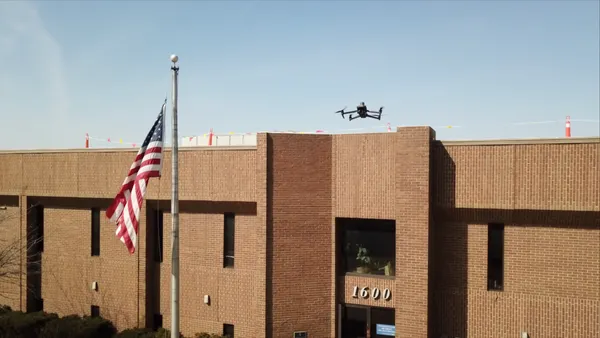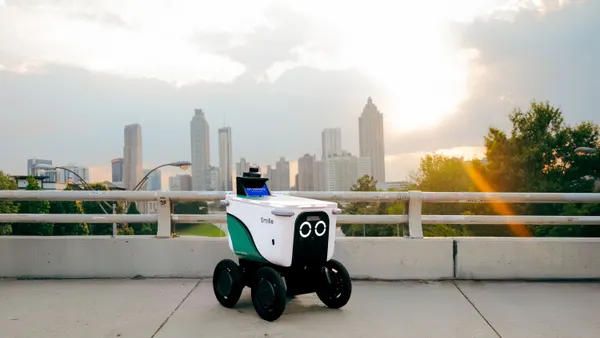One of the most important recent urban infrastructure announcements had nothing to do with the construction of a new bridge or road. This past February, the city of Columbus, Ohio issued a request for proposals (RFP) to technology companies interested in building what will become the Smart Columbus Operating System, or SCOS.
The SCOS will take three years to build and will serve as a hub for all of Columbus’s interrelated smart city efforts – everything from the use of data to improve traffic and parking to harnessing information to make the city greener. By no means is Columbus alone in taking a more formalized approach to tapping the enormous potential of data to improve the functioning of local government and the lives of its citizens.
For example, late last year Philadelphia’s Office of Innovation & Technology began hosting community workshops as part of an effort to develop a smart city roadmap that ensures the benefits of improved technology and data gathering are delivered equitably to the city’s residents. Similar efforts are underway in large cities like Washington, D.C. and New York as well as smaller municipalities like Kingston, Ontario, where a public-private partnership with Canada’s largest communications company is helping harness technology and data to reduce the city’s carbon emissions and provide Wi-Fi access via digital kiosks.
All of this activity and momentum helps underscore the fact that the very definition of urban infrastructure is changing from purely physical assets to also include data and technology.
"This trend is driven by several factors," says Dr. Steven E. Koonin, director of NYU’s Center for Urban Science and Progress. "One is that data helps a city to plan and operate more effectively. But equally important is that data are now available through the digitization of government and private sector records and the proliferation of cheap sensors. Of course, we also have growing capabilities to store, integrate, and analyze all of that data."
In large part, this is being driven by advancements in technology and an increasing commitment by technology companies to serve city governments. Indeed, Louisville, Kentucky has an ambitious plan to improve the flow of traffic around the city by pairing sensors and cloud technology in a way that allows traffic lights and other infrastructure to adjust when bottlenecks appear. Louisville is able to accomplish this – and improve the everyday life of its citizens – by working with Amazon Web Services (AWS) and its cloud technology platform, which allows large data sets from the city and the state to be analyzed in order to pinpoint possible improvements.
The examples of how cities are tapping sensors, the Internet of Things (IoT), blockchain and other technologies to improve public safety, environmental quality, traffic, and contracting are nearly limitless. But achieving the many benefits technology and data can provide to cities requires a human touch. Whether it's the SCOS in Columbus, Ohio or the LouisLab data hub in Louisville, Kentucky, effective use of data to improve the quality of life in a city depends on having people skilled in using large amounts of data to address real-world challenges.
Put another way, cities and their corporate partners need people who are rigorously trained in order to translate the potential of data into tangible benefits for urban dwellers around North America. Providing that kind of training is one of the goals of New York University’s Center for Urban Science and Progress, or CUSP, which offers a one-year Master of Science degree in Applied Urban Science and Informatics.
"To derive actionable insights from the massive amounts of urban data being generated, future city leaders and policymakers will need competencies that cross traditional boundaries of computer and data science, urban planning and public policy, and operations research," said Dr. Constantine E. Kontokosta, Assistant Professor and Deputy Director for Academics at CUSP. "In our MS program, students develop breadth and depth in informatics disciplines and domain applications in an intense, experiential learning environment that emphasizes real-world problem-solving. These skills include knowledge of programming, data mining and management, applied mathematics and statistics, machine learning, and visualization, as well as urban systems and the social, political, and economic realities facing both developed and developing cities."
The 11-month program provides students a mixture of classroom and real-world training to hone the skills required to collect and analyze data to improve city operations in areas that include energy efficiency in buildings, transportation and mobility, public health, environmental sustainability, and safety. As part of the program, students work as part of a multidisciplinary team to identify, evaluate, collect, and analyze data that solves an actual problem faced by a city agency or industry partner.
Students will also have the opportunity to work closely with CUSP researchers, whose mandate is to use data to improve the lives of New Yorkers.









